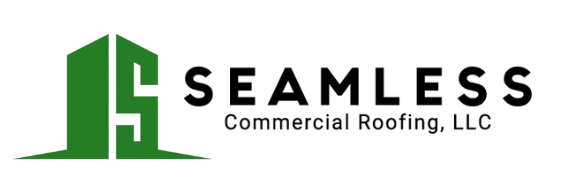Sustainable Roofing Options
When considering environmentally friendly roofing products for your commercial property in Wisconsin, it’s essential to focus on sustainable options that not only contribute to environmental preservation but also offer long-term benefits in terms of durability and energy efficiency. Let’s explore two key aspects of sustainable roofing options: environmentally friendly materials and energy-efficient designs.
Environmentally Friendly Materials
One of the most popular choices for environmentally conscious roofing is metal roofs. These roofs are typically crafted from recycled materials like aluminum or steel, making them highly sustainable. Metal roofs also reflect sunlight, reducing heat absorption and decreasing the energy required for cooling the building. Additionally, metal roofs can be installed over existing roofs, minimizing waste during replacement and extending the lifespan of the roof.
| Roofing Material | Sustainability Features |
|---|---|
| Metal Roof | Made from recycled materials, recyclable, energy-efficient |
Metal roofing systems are an excellent choice for eco-conscious businesses seeking a cost-effective and durable solution that aligns with sustainability goals. By opting for metal roofs, you contribute to reducing the environmental impact of your property while enjoying the benefits of a long-lasting and low-maintenance roofing option.
Energy-Efficient Designs
Embracing energy-efficient roofing designs is crucial for enhancing the sustainability of your commercial property. Green roofs, also known as living roofs, have emerged as a prominent trend in sustainable roofing practices due to their numerous environmental benefits (Roof Doctors). These roofs consist of layers of vegetation that offer various advantages, such as improved insulation, stormwater management, and habitat creation.
| Roofing Design | Environmental Benefits |
|---|---|
| Green Roof | Improved insulation, stormwater management, habitat creation |
Although green roofs may require regular maintenance and initial investment, their multifaceted impact on the environment makes them a valuable long-term investment. Green roofs help mitigate stormwater runoff, enhance biodiversity, improve air quality, and provide natural insulation, ultimately leading to reduced energy consumption.
By incorporating environmentally friendly materials and energy-efficient designs into your commercial roofing solutions, you not only contribute to environmental sustainability but also create a more resilient and cost-effective roofing system for your business in Wisconsin. Explore innovative roofing options that prioritize sustainability to benefit both your property and the environment.
Selecting the Best Roofing Solution
When it comes to choosing the best environmentally friendly roofing products for your commercial building in Wisconsin, several options cater to sustainability and durability. Here, we highlight two exceptional roofing solutions that align with eco-conscious practices: wood shakes and shingles, and green roofs and living roofs.
Wood Shakes and Shingles
Wood shakes and shingles stand out as renewable resources and among the most eco-friendly roofing options available. Harvested sustainably, they are durable, biodegradable, and contribute to a reduced environmental impact. These roofing materials offer a natural aesthetic appeal while being kind to the planet. It’s crucial to ensure the wood is sourced in an environmentally friendly manner to maintain its green credentials. (Roof Doctors)
Green Roofs and Living Roofs
Green roofs, also referred to as living roofs, have gained popularity as a prominent trend in sustainable roofing solutions. These roofing systems provide a host of environmental benefits, such as improving air quality, reducing stormwater runoff, and enhancing energy efficiency through effective insulation methods. In fact, green roofs have the potential to double or even triple the lifespan of a rooftop up to 40 years. The numerous advantages of green roofs include increasing biodiversity, enhancing property value, reducing roof surface temperatures significantly, reducing heat transfer, reducing noise pollution, moderating urban heat island effects, and creating habitat for birds and insects.
Green roofs offer a myriad of advantages beyond environmental sustainability. They moderate heat, purify the air, manage rainwater runoff effectively, improve energy efficiency, and augment the natural beauty of a building, particularly in urban areas. Fostering vegetation on roofs provides multiple benefits such as enhanced air quality, improved insulation, reduced stormwater runoff, and added habitat for local wildlife.
For the successful installation and maintenance of green roofs, specialized design considerations and ongoing care are essential to maximize their functionality. If you’re considering long-term sustainability and looking to optimize the environmental impact of your commercial building, green roofs and living roofs present a promising roofing solution. (Roof Crafters)

